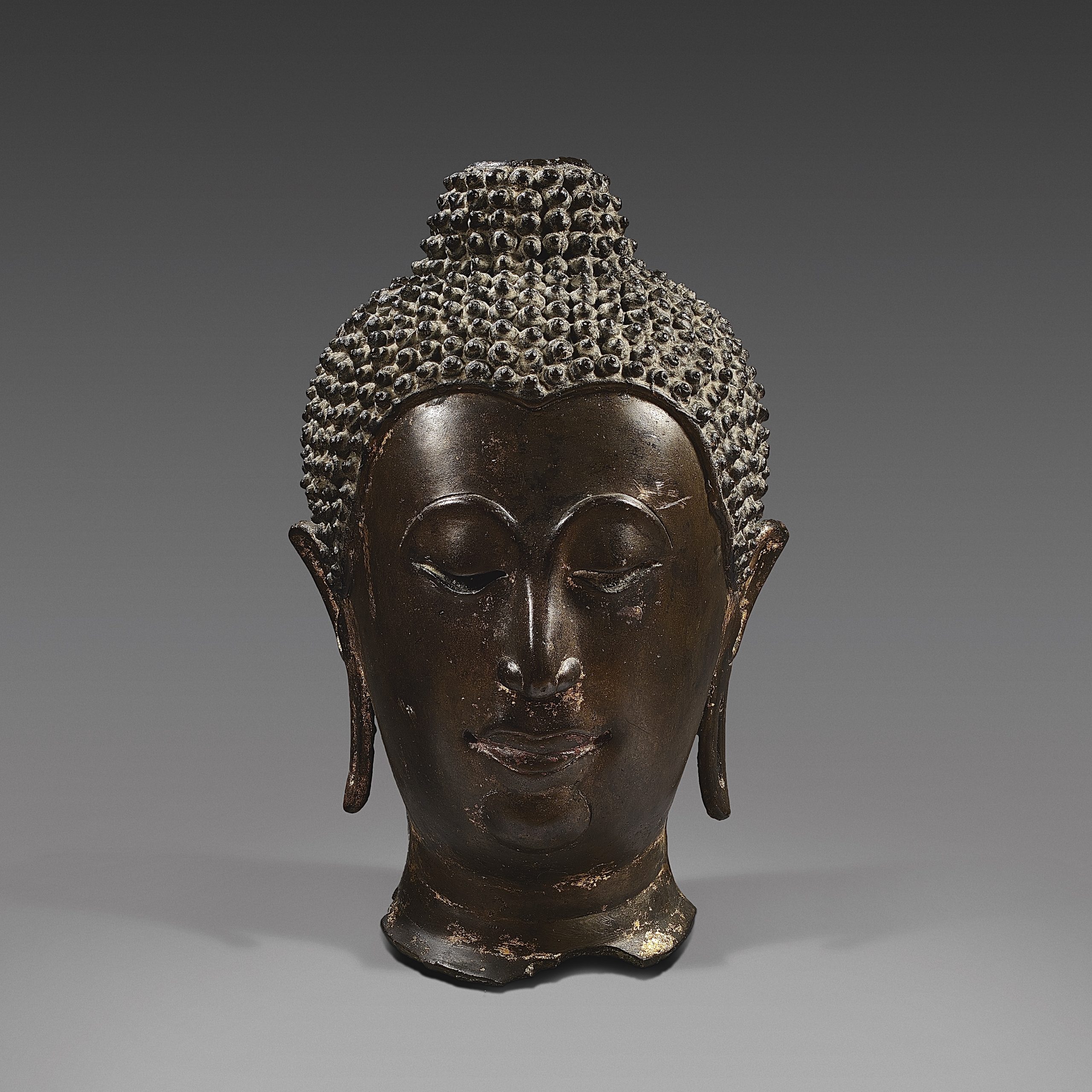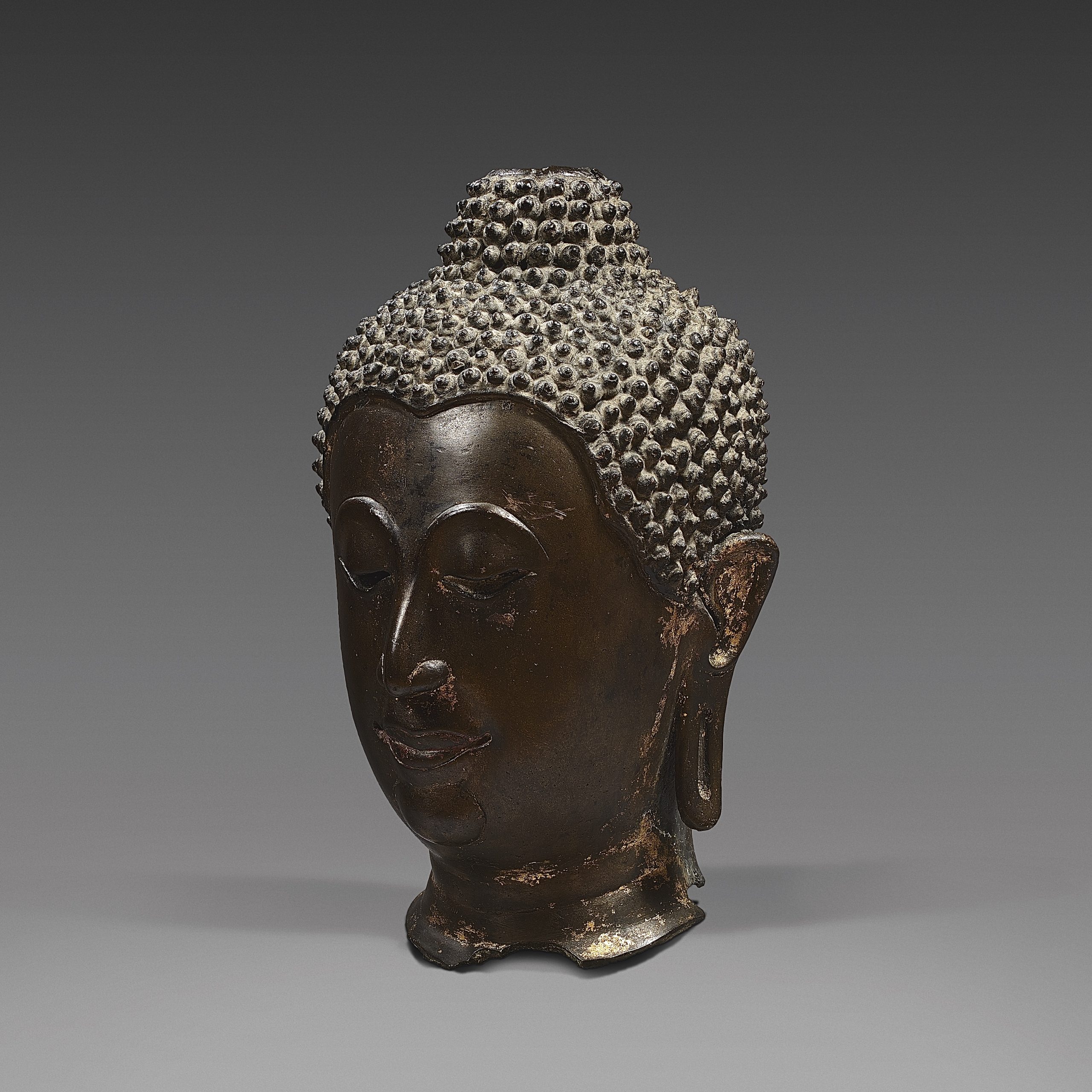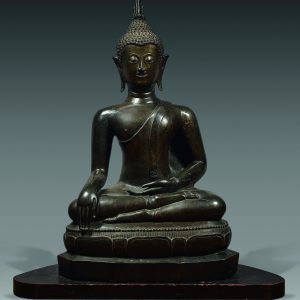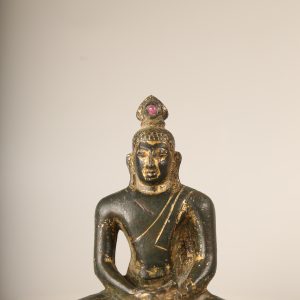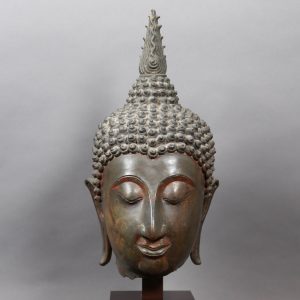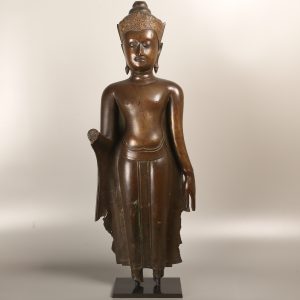Thai Buddha head in bronze
28 000,00€
Bronze
Thailand
Late 16th century, Ayutthayā kingdom (1350-1767)
H. 40 cm
Description
It is difficult to specify the iconography of the Buddha from which this head comes. In Thailand, the heads were melted apart and then attached to the bodies with rivets. It explains why their lower part have a very regular cut, with sometimes, as here, a tear at the point of their fixation.
In 1350, a prince of U Thong founded Ayutthayā, took the name of Rāmathibodi 1 and unified Thailand, then called Siam. Ayutthayā will remain the capital until it is captured by the Burmese in 1767.
This long period saw the development of a rich, stylistically very varied art, mixing with an infinite variety the aesthetics of the various previous Thai schools. This majestic head presents a happy synthesis between the canon of the art of Sukhothai according to the workshops of Kampheng Phet and the U-Thong C style. From the workshops, the head resumes the general features of the face; from the U-Thong C style are the hairstyle descending sharply in the middle of the forehead, the brow ridges in high relief and the ears with the distended lobes spiking outwards. A seated Buddha of the National Museum of Chaināt (Jayanāda), U-Thong C style (Bowie, 1972, p.108-109, n ° 63), presents these peculiarities but also own characters, in particular the slightly cubic geometry of the face, here absent. The face of the present head, on the other hand, is longer than most classic Sukhothai faces: it is easy to convince oneself by comparing it, for example, with the face of a Buddha preserved in the Brooklyn Museum (Statton, 2004, p. 172, Fig. 7.21).
Provenance: Private collection, Turin, since 1973.

